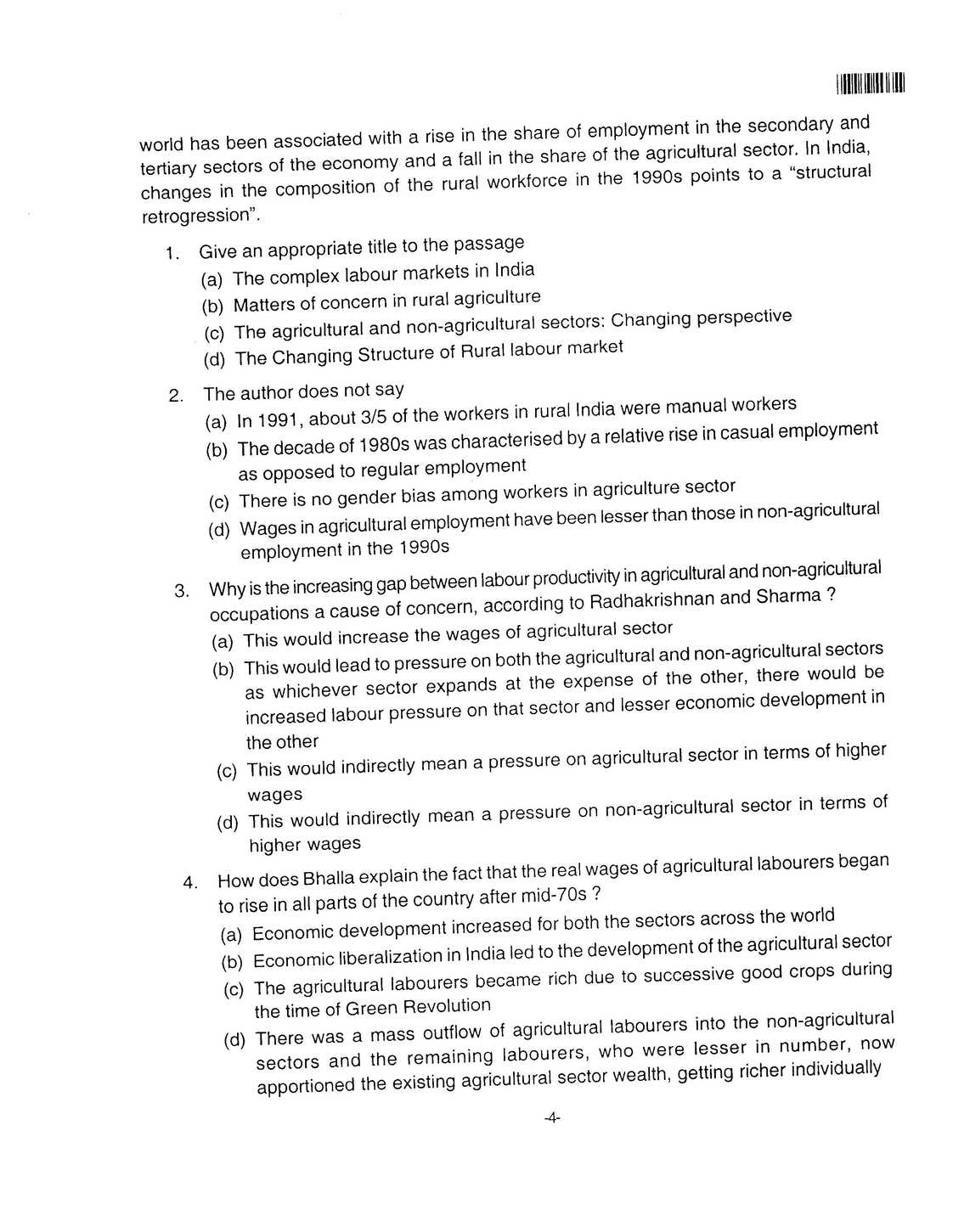|
#2
September 7th, 2016, 10:01 AM
| |||
| |||
| Re: AILET Last Year Papers
Well below I have given you the AILET last year LLB papers so you can have a look Directions (Qs. 1 -9) : Read the following passage carefully and then answer the questions that follow. Rural manualworkers comprise the single largest occupational category in lndia. ln 199'1, according to the National Commission on Rural Labour, 60 percent of the workers in rural India were manual workers and they numbered more than 160 million. The changes in te working and living conditions of rural labourers are thus central to changes in the welfare of the rural population and of the country as a whole. The structure and working of rural labour markets in India is complex; as is well known, there is great diversity across regions and across segments of the labour market. This article brings together an interesting body of research that seeks to understand and explain the types of changes that have accrued in the structure of rural labour markets over the last few decades. The 1980s were characterised by an explosion of the rural labour force, slow employment growth in agriculture and a rise in the share of non-agricultural employment. The decade was also characterized by a growing casualisation of the work force (for a relative rise in casual employment as opposed to regular employment). At the same time, it was a period when agricultural wages increased in real terms and when income poverty declined. There was what may be called "the tension between the estimated decline in poverty on the one hand, and the slow growth of agriculturalemployment and increased casualisation of the labour force on the othe/'. Some of the trends in the development of rural labour over for this period are a source of concern. These include, as Radhakrishnan and Sharma note, the continuous widening of the gap between labour productivity in agricultural and non-agricultural occupations, the burgeoning mass of rural casual workers who have no social security safety net, and the increasing number of women employed at very low wages in agriculture. Another matter for concern, one that emerges from a desegregation of data on rural unemployment by age groups, is that the incidence of unemployment is higher for persons in the age group of 15-29 than for any other age group in others words, unemployment is typically high among new entrants to the workforce. ln her review of trends in wages, employment and poverty, Sheila Bhalla shows that the real wages of agricultural labourers stagnated from the time of independence to the mid 1970s and then began to rise in all parts of the country. This was also the period in which the irrcidence of rural poverty began to decline. The rise in wages was not limited to the more prosperous agricultural zones, and Bhalla argues that the movement in real wages     |